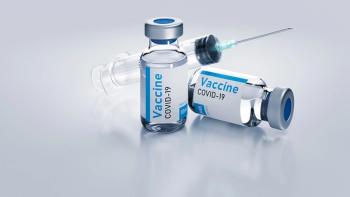
- BioPharm International-02-01-2020
- Volume 33
- Issue 2
Global Supply Issues Create Challenges
Increased reliance on foreign producers raises concerns and spurs collaborations.
Rising imports of drugs and APIs, at a time when FDA is struggling to inspect and oversee foreign manufacturers, has focused attention on difficulties in ensuring the quality and safety of drugs made overseas. A main FDA strategy is to align with other capable regulatory agencies through agreements to share inspection reports and resources. Ironically, the difficulties in monitoring foreign producers raise questions about efforts by the White House and Congress to boost importation of drugs from Canada to reduce outlays for medicines at home.
FDA’s challenges in overseeing foreign producers were outlined starkly at a hearing before the House Energy & Commerce subcommittee on Oversight & Investigations in early December 2019. This followed a similar session by the panel’s Health subcommittee in October 2019 on the rising volume of APIs entering the United States through a vulnerable supply chain. A main fear is that unreliable and contaminated imports could aggravate shortages of critical drugs and create security risks for the US. The legislators questioned the adequacy of FDA’s foreign drug inspection program, noting ongoing recalls of blood pressure medications manufactured in China and India that were contaminated by trace amounts of carcinogens.
Janet Woodcock, director of FDA’s Center for Drug Evaluation and Research, had the unenviable task of explaining how the agency was addressing these issues. She acknowledged in December that FDA was conducting fewer inspections of foreign drug producers, largely due to difficulties in hiring and training sufficient numbers of investigators to conduct site visits overseas. But she also reported a decline in never-inspected foreign sites and a rise in the number of facilities rated acceptable by the agency (1).
In response to concerns raised in a report from on ongoing investigation by the Government Accountability Office (2), Woodcock noted FDA efforts to engage more translators so that FDA inspectors do not have to rely on regulated companies for translation services. A continuing difficulty, she acknowledged, is FDA’s need to announce planned visits to foreign sites to ensure that the facility is operational, while domestic inspections are unannounced. Woodcock noted that limited FDA resources hinder fast resolution of these problems but hoped that a modernized FDA current good manufacturing practice inspection process being implemented would improve the effectiveness of its oversight of all manufacturing facilities.
More collaboration
FDA also looks to reduce the need to inspect certain manufacturing facilities in Europe and other nations through increased participation in Mutual Recognition Agreements (MRAs) with other capable inspectorates. FDA and the European Union finalized an MRA in July 2019 that allows FDA to rely on inspections in EU member states, while European inspectors similarly can request FDA inspection reports on US facilities (3).
More recently, FDA announced a new pilot program with the European Medicines Agency and regulators in the United Kingdom, Australia, Canada, and Japan to share information from GMP inspections of sterile human drug manufacturing sites in these and other regions. FDA also is considering additional MRAs for overseeing clinical research sites, test laboratories, and additional products, such as veterinary medicines (4).
In addition, regulatory authorities in all regions are working to improve the effectiveness and quality of GMP inspections through the Pharmaceutical Inspection Co-operation Scheme (PIC/S). Regulators from the US, Europe, Australia, Canada, and other nations have developed recommendations for how inspectors may evaluate a company’s pharmaceutical quality system to encourage more effective manufacturing systems around the world. PIC/S also has published documents to support effective oversight of biological medicines and advanced medical products.
Regulatory programs that encourage manufacturers in all regions to invest in advanced manufacturing technology able to ensure product quality represents the best long-term solution to many of these issues, explained Woodcock at Congressional hearings and in multiple presentations to industry. At December 2019 meetings on global pharmaceutical regulation and risk management sponsored by the International Society of Pharmaceutical Engineers and by the Parenteral Drug Association, Woodcock made the case for establishing a system able to rate production sites on “quality maturity,” a desirable status that a firm could promote to customers and investors. And high-quality continuous manufacturing systems, she predicted, would reduce waste from failed batches and thus lower costs significantly.
Meanwhile, concerns over high drug prices at home have prompted the Trump Administration to authorize new pathways for states and other entities to import drugs from Canada, and for manufacturers to import their own products made and sold overseas. The rules are complicated and will be subject to extensive comments and revisions; it’s not clear that any potential importer will meet all the requirements for ensuring that such imports will not risk public health and safety in the US-and provide savings for consumers.
It’s also not clear that any manufacturer will seek to sell its own foreign-made drugs in the US at lower prices. And Canadian officials indicate no ability to expand drug supplies to meet US needs. But Florida and several other states have authorized drug importing and are looking for new strategies to do so, despite the potential for further complicating the drug importing picture.
References
1. FDA, “
2. GAO,
3. Mark Abdoo, “Measuring the Impact of the Pharmaceutical Annex to the U.S./EU Mutual Recognition Agreement,”
4. National Academies of Sciences, Engineering, and Medicine, “To Improve Public Health, Medicine Regulators Worldwide Should Collaborate, Remove Barriers to Sharing Information, Says New Report,”
Article Details
BioPharm International
Vol. 33, No. 2
February 2020
Pages: 8-9
Citation
When referring to this article, please cite it as J. Wechsler, "Global Supply Issues Create Challenges," BioPharm International 33 (2) 2020.
Articles in this issue
almost 6 years ago
Managing Risk for Cell and Gene Therapy Logisticsalmost 6 years ago
The Call for a Rapid Responsealmost 6 years ago
Data Management Practicesalmost 6 years ago
Biopharma Analysis Benefits from New Technology and Methodsalmost 6 years ago
Cell Therapies: The Living End of Growth Opportunitiesalmost 6 years ago
Fresh Thinking in Biologic Drug Formulationalmost 6 years ago
The Need for Advanced Process Modeling for New Therapeutic Biologicsalmost 6 years ago
Cell Culture Variables for Gene Therapy Vectorsalmost 6 years ago
Challenges in Vector Purification for Gene TherapyNewsletter
Stay at the forefront of biopharmaceutical innovation—subscribe to BioPharm International for expert insights on drug development, manufacturing, compliance, and more.





